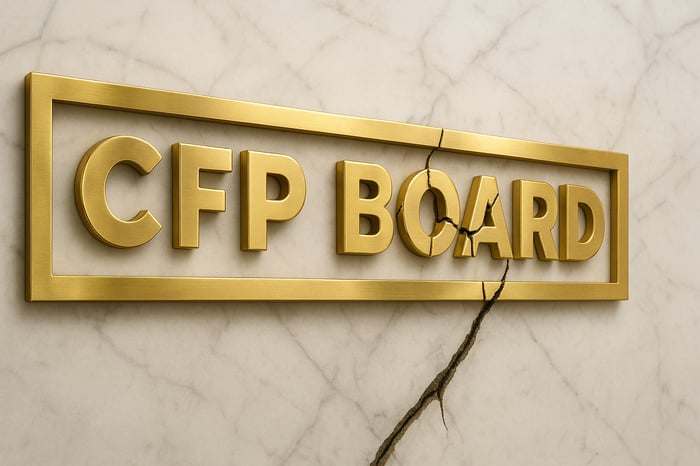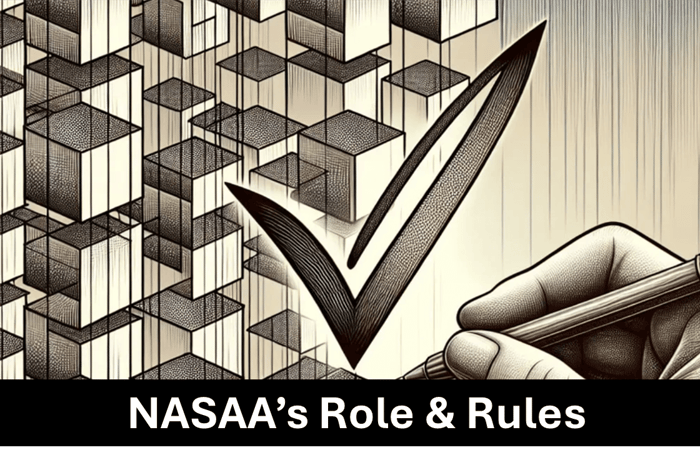CFP Brand Dominance Of CPA Financial Planners
When personal finance was recognized as a field of study about 50 years ago, CPA financial planners held a natural advantage in the wealth management profession: trust. By the time the CFP designation began to develop institutionally in the 1970s and '80s, CPA personal financial planners were already operating in the field as a profession. However, AICPA squandered the opportunity to dominate personal financial planning, while the CFP Board starting in the late 1980s, launched a persistent branding campaign that has overcome the CPA's brand advantages. Thanks in large part to a relentless TV marketing push for the last 15 years, today CFP professionals have strong consumer recognition. As dominant as the CFP® mark has grown, however, cracks are forming in its credibility when it comes to continuing education (CE) —the foundation of trust. When you compare CFP versus IAR CE and CPA CPE requirements, the weakness of CFP CE requirements is glaring.
CE Requirements: CFP vs. CPA vs. IAR
To compare CFP CE requirements versus IAR CE and CPA CPE, let’s start with the raw numbers. Here's a table of the requirements:
| Designation | Annual CE Hours Required | Assessment Required? |
|---|---|---|
| CPA (most states) | 40 hours | No (if live); Yes (if self-study) |
| CFP® | 15 hours (30 every 2 years) | No for live webinars |
| IAR (NASAA Model Rule) | 12 hours | Yes, exam required |
IARs Face More Rigorous CE Than CFPs and CPAs
This is surprising for several reasons. First, IAR is not a professional designation. Historically, an IAR could be registered simply by filing a form, without taking an exam in many cases. That's still true of federally registered IARs and state-registered IARs not subject to NASAA's Model CE Rule. It is why regulators have long discouraged using “IAR” on business cards because it could mislead people into thinking an Investment Adviser Representative was a professional credential. Now, ironically, state-registered IARs subject to NASAA CE rules face more CE rigor than CFPs or CPAs. It turns the traditional hierarchy on its head.
An IAR must pass 12 exams a year to stay compliant. In contrast, a CFP can attend 15 hours of live webinars without any requirement to demonstrate they learned anything. Even CPAs—who must complete 40 hours of NASBA-approved classes annually—can often fulfill their requirement through IAR CE and CPA CPE offerings that don’t include any form of post-session testing to confirm they learned anything. But the 40-hour annual commitment versus 15 for CFPs is makes the CPA system far more rigorous.
The uncomfortable truth: a non-designation, IAR, is now subject to stricter continuing education standards than CFP® professionals. This is not a good look for CFP professionals and undermines the public trust that regulators are meant to uphold.
NASAA’s Model CE Rule: A Game-Changer for IAR CE Requirements
The North American Securities Administrators Association (NASAA) emerged as a significant force in the regulation of IAR CE in 2022. Though NASAA itself is not a governmental agency and lacks statutory power, its model rules are frequently adopted by state regulators, thereby shaping legislation across the country. Like NASBA for CPAs and the National Association of Insurance Commissioners (NAIC) for insurance professionals, NASAA centralizes and guides the states in formulating enforceable regulatory policy and rules.
In 2022, NASAA issued a Model Rule on IAR CE. The rule stipulates that Investment Adviser Representatives (IARs) must complete 12 CE credits per year—six in Ethics and Professional Responsibility and six in Products and Practices. In 2025, 22 states, including populous ones like California and Florida, have adopted NASAA's IAR CE requirements. Whether NASAA planned it or not, their entrance has raised the bar to get more rigorous in the education of financial professionals across all of the various designations.
How CFP Board Built Its Brand Through Advertising
Meanwhile, the CFP Board has invested heavily in building a brand over the past 15 years. Its masterful campaigns transformed the CFP® certification from a low-awareness credential to the most recognizable brand in personal finance. Key advertising milestones include:
2009: "Let’s Make a Plan" launches.
2011: $10M annual ad budget begins.
2014: Celebrates 75% increase in consumer awareness.
2018: Rebrands to emphasize “real planners.”
2021: “It’s Gotta Be A CFP®” campaign goes multi-platform.
2022: $15M+ spent on advertising.
2023: Reports record unaided brand awareness.
2024: “Quite Possibly the Perfect Job” targets students.
2025: Dual campaigns expand outreach and career promotion.
The campaign has worked. The CFP® mark is now more recognizable while the CPA Personal Financial Specialist designation backed by AICPA is almost unknown.
CFP CE Requirements Undermine CFP Credibility
Despite the branding success, the CFP® certification raises a question: If an IAR is required to pass 12 assessments per year while a CFP can coast through 15 hours of webinars without ever taking a scored exam to prove they learned anything, when does it begin to erode brand credibility? Will consumers and the financial press ever notice there's a new sheriff, NASAA, policing CE and rewriting the rules?
Even IAR CE and CPA CPE programs—though less rigorous than NASAA’s model in some respects—require a minimal measure of interactivity: three polls that are not graded. However, the absence of a knowledge check of any type in CFP CE at live events effectively means that learning is optional.
To maintain trust, the CFP Board could consider reforms. It might want to require exams for CE credit on live webinars, like NASAA does with IARs. In addition, CFP Board could increase required hours from effectively 15 per year to come closer to matching the 40 hours a year required of CPAs.
What This Means for CFP CE, IAR CE and CPA CPE
If you're offering financial planning services, it’s essential to understand this shift in the professional education landscape. IAR CE and CPA CPE standards are increasingly being compared not only to each other but also to the CFP model—and the comparison is unflattering to CFPs.
Ironically, while the CFP Board wins the PR war, it’s falling behind in educational substance. IAR CE has quietly become the gold standard in financial advisor education—offering exam-based credit, topic-specific structure, and regulator oversight.
That creates an opening for financial planners who want to distinguish themselves—not just with letters after their name, but through substantive learning and client-facing competence.
At Advisors4Advisors, we’ve spent decades educating CFPs, CPAs, IARs, and CIMAs. Because we operate across silos and provide CE to IARS, CFPS, CIMAs, and other professionals as well as CPA CPE, we’re uniquely positioned to identify trends before they hit the mainstream. This is one of those moments.
The emergence of IAR CE as the most rigorous option in the marketplace is big news. And no one else is talking about it.
Bottom Line
As a provider of professional education across professional designations—including CFP CE, CIMA CE, IAR CE and CPA CPE—A4A has a unique perspective that enables us to see the differences in CE rules between credentials. We're telling you there may be a problem when IARs, who do not hold any professional credentials, are required to complete more rigorous education requirements than CFPs. That’s why we’re posting this article.




